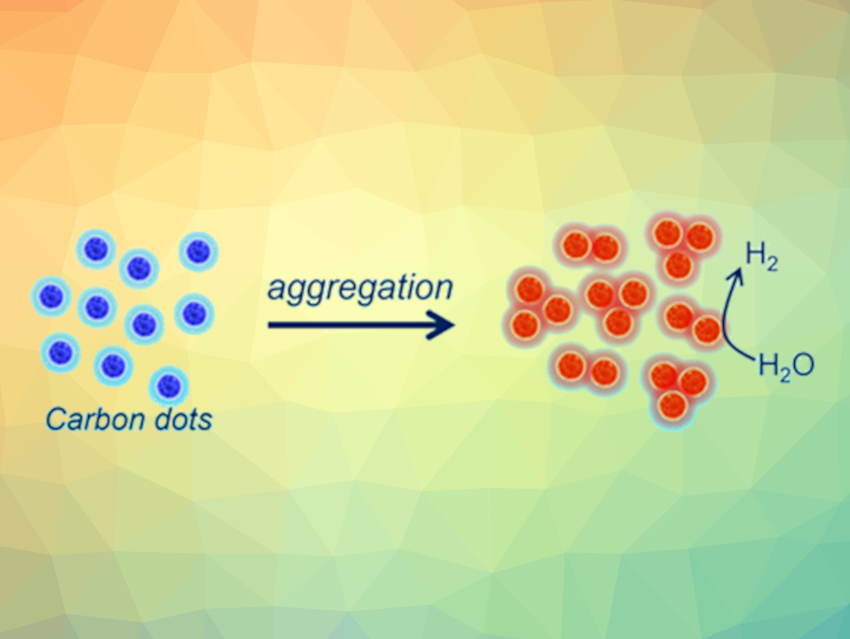Photocatalytic water splitting to produce hydrogen is a promising approach for the conversion and storage of solar energy, but existing photocatalysts for this reaction often suffer from narrow light absorption. Thus, broad-band red- and near-infrared (NIR)-light-responsive photocatalytic systems would be useful, but their development has been challenging so far.
Generally, the optical and electronic properties of π-conjugated molecules are mostly determined by their conjugated backbones. However, these properties can be modified by aggregation. For instance, the aggregation of molecules can lead to a red shift in the absorption spectrum and induce symmetry breaking, which generates a dipole moment and enhances the separation and transfer of charge carriers.
Pengju Yang, Shanxi University, China, and colleagues have found that aggregation-enhanced photocatalysis can be realized using carbon dots. The team synthesized light-active carbon dots using sucrose and sodium nitrite as precursors via a photochemical method at room temperature. They discovered that the aggregation of the carbon dots leads to near-infrared (NIR) light harvesting. Additionally, weak non-covalent interactions between neighboring carbon dots lead to dynamic properties of the aggregate structure. This dynamic structure induces symmetry breaking, generating a dipole moment. Consequently, it facilitates photogenerated charge separation and prolongs the carrier lifetime.
Due to the good light trapping performance and efficient charge separation, the carbon dot aggregates enable effective NIR-responsive photocatalytic hydrogen production. Optimized aggregates showed an apparent quantum yield of 13.5 % for photocatalytic hydrogen production at 800 nm. Overall, the researchers successfully modulated the light absorption and charge separation properties of photoactive materials by aggregation, which provides a new concept for the construction of high-efficiency solar energy conversion systems.
- Dynamic aggregation of carbon dots self‐stabilizes symmetry breaking for exceptional hydrogen production with near‐infrared light,
Qi Zhang, Ya Zhang, Hu Shi, Hongxia Zhang, Jianghong Zhao, Zhanfeng Zheng, Hengquan Yang, Pengju Yang,
Aggregate 2023.
https://doi.org/10.1002/agt2.424




